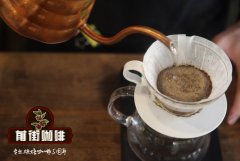What are the varieties of coffee grown in Brazil, the ancestor of honey-treated coffee?

Professional coffee knowledge exchange more coffee bean information please follow the coffee workshop (Wechat official account cafe_style)
Brazil is known as the kingdom of coffee. It is the largest coffee producer and exporter in the world. Coffee production accounts for more than 30% of the world's coffee production. 1 / 6 of the world's coffee is produced here. Brazil is also the second largest coffee consumer in the world after the United States. About 300000 farmers here are engaged in the coffee industry. It not only carries the important task of Brazil's economic development, but also affects the development of coffee in the world. You know, the vast majority of instant coffee is made from Brazilian coffee.
Although Brazil produces 30% to 35% of the world's coffee annually, ranking first in the world, it is a pity that no Brazilian coffee can be called the top coffee. There are coffee trees all over the mountains, distributed in the southern part of Brazil. Compared with other coffee-producing countries in Central and South America, Brazil is significantly lower, with farms mostly at an altitude of about 600mur1000 meters, and even South Minas, Serrado and Mojiana, the three major boutique producing areas, rarely exceed 1300 meters. Brazil's terrain is too flat and monotonous for coffee cultivation and lacks a microclimate that gives coffee rich flavor factors, making it more suitable for growing shade-free Kaddura, New World and Kaduai.
In 1727, Francesco, a Portuguese diplomat, was sent to French Guiana to mediate the territorial dispute. In the process of mediation, he hooked up with the wife of a local official. At parting, the official's wife quietly hid several coffee seeds in the flowers given to him. Later, he planted coffee seeds in Brazil and achieved good results.
It is this important romance story that coffee has taken root and sprouted in Brazil, and Central and South America has begun to introduce and grow coffee because of the widespread cultivation in Brazil. By 1845, Brazil had produced 45% of the world's coffee beans, and for more than 150 years, Brazilian coffee had been the largest coffee producer in the world.
The calm and supple of Brazilian coffee
Friends who are familiar with Brazilian coffee must know that Brazil not only has high-quality high-quality coffee, but also an indispensable basic bean in many blended coffees. The most important feature of Brazilian coffee taste is peace, so that people do not have to have too much burden on bitter and sour taste, smooth taste, suitable for matching with all kinds of coffee. The gentleness of Brazilian coffee is also closely related to the conditions of Brazilian coffee.
Unlike most of the world's coffee grown in the mountains, most of Brazil's coffee is grown in the plains. Although the plains of Brazil are low above sea level (also 600-900m). But the area is wide, and it is located in the temperate zone, and the temperature is suitable, so it is also suitable for coffee growth. So Brazil has adopted a strategy of winning by quantity.
For this reason, Brazilian coffee does not have the hardness and strong sour taste of high-altitude coffee, and the beans themselves are soft, so most Brazilian commercial beans are easy to bake and taste softer.
The ancestor of honey-treated coffee
When it comes to Brazilian coffee, another thing I have to say is that half-sun treatment in Brazil also has a lot to do with all kinds of popular honey treatments.
Because Brazil is short of water, but most of the climate is humid and the drying efficiency is inefficient. So when sun washing doesn't work, smart Brazilians have created a way to quickly improve the drying efficiency by ploughing the peel of coffee and drying it on the bedstead / cement floor.
And this method, spread to Costa Rica, has been constantly improved in detail and turned into honey treatment. It can be said that Brazil is the ancestor of coffee honey processing.
END
Important Notice :
前街咖啡 FrontStreet Coffee has moved to new addredd:
FrontStreet Coffee Address: 315,Donghua East Road,GuangZhou
Tel:020 38364473
- Prev

Eight major producing areas of Ethiopia introduce how to drink Ethiopian Lim Limu coffee?
Professional coffee knowledge exchange more coffee bean information please follow the coffee workshop (Wechat official account cafe_style) Ethiopian coffee is mainly produced in eight major areas: Lekempti, Limu, Illubabor, Djimmah, Harar, Teppi/Bebeka, Sidamo, Yirgacheffe. Ethiopian coffee is highly rated in China, especially for Ethiopian coffee.
- Next

About 60% of Kenya's coffee is grown by smallholder farmers, who cling to good slopes that cannot be opened on a large scale.
Professional coffee knowledge exchange More coffee bean information Please pay attention to coffee workshop (Weixin Official Accounts cafe_style) Kenya coffee planting As the saying goes, good cattle produce good milk, good local coffee I was planted in Kenya at an altitude of 1400 to 2000 meters, growing in a rich volcanic soil. The climate here is comfortable, never hotter than in European summers, all year round.
Related
- Detailed explanation of Jadeite planting Land in Panamanian Jadeite Manor introduction to the grading system of Jadeite competitive bidding, Red bid, Green bid and Rose Summer
- Story of Coffee planting in Brenka region of Costa Rica Stonehenge Manor anaerobic heavy honey treatment of flavor mouth
- What's on the barrel of Blue Mountain Coffee beans?
- Can American coffee also pull flowers? How to use hot American style to pull out a good-looking pattern?
- Can you make a cold extract with coffee beans? What is the right proportion for cold-extracted coffee formula?
- Indonesian PWN Gold Mandrine Coffee Origin Features Flavor How to Chong? Mandolin coffee is American.
- A brief introduction to the flavor characteristics of Brazilian yellow bourbon coffee beans
- What is the effect of different water quality on the flavor of cold-extracted coffee? What kind of water is best for brewing coffee?
- Why do you think of Rose Summer whenever you mention Panamanian coffee?
- Introduction to the characteristics of authentic blue mountain coffee bean producing areas? What is the CIB Coffee Authority in Jamaica?

